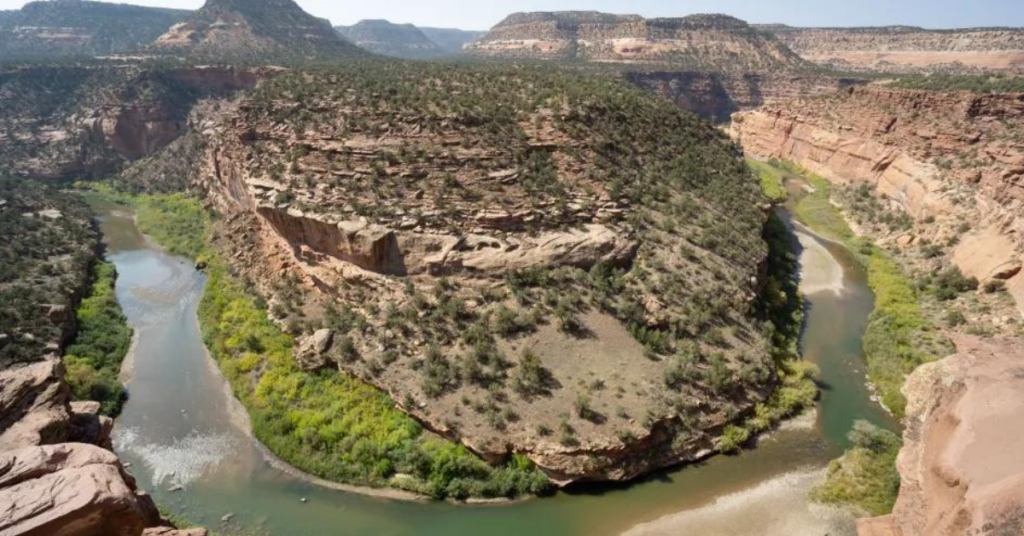
By Bobbie Daniel | Guest Commentary, Rocky Mountain Voice
Public lands are woven into the fabric of Colorado’s identity, serving as living symbols of our shared heritage, natural beauty and deep connection to the land.
Nowhere is this more evident than in Western Colorado, where public lands foster a profound respect for nature and a commitment to stewardship. To ensure these lands thrive for future generations, we must adopt outcome-based policies prioritizing access, sustainability and thoughtful management — balancing conservation with economic vitality.
Unfortunately, this balance is increasingly threatened by political instability and federal overreach. Mesa County, where 73% of the land is federally managed, provides a telling example of the challenges at hand. Federal bureaucracy often undermines conservation goals, restricts economic opportunities and creates inefficiencies that frustrate local communities. The proposed Dolores Canyons National Monument encapsulates these issues, raising concerns about redundant oversight and its impact on resource management, economic growth and community well-being.
The Antiquities Act of 1906, originally designed to protect unique cultural landscapes, has become a blunt instrument for federal overreach, bypassing local input and leaving communities with reprehensible whiplash. Bears Ears National Monument is a case in point: created, reduced and restored amid political swings, the monument left local communities in limbo, eroding trust and creating inefficiencies.
In the case of Dolores Canyons, existing management plans by the Bureau of Land Management (BLM) and the United States Forest Service (USFS) already safeguard critical habitats, cultural resources and recreational opportunities. Survey data from Mesa, Montrose and San Miguel counties reflect public frustration: 60% of respondents oppose the proposed Dolores Canyons National Monument, and only 20% believe the federal government is the right agency to manage and conserve public lands and open spaces. Recognizing these issues, the Mesa County Board of Commissioners passed a resolution on May 14, 2024, opposing the creation of the Dolores Canyons National Monument.
Mesa County residents are all too familiar with the consequences of distant decision-making. A 40-acre parcel in Clifton remains stuck in bureaucratic limbo despite years of local efforts to acquire it. It has languished on the BLM’s disposable list for years, despite Mesa County’s ongoing efforts and acts of Congress to acquire it for economic development. Another example is the Grand Mesa Visitor Center, which remains closed due to federal budget and workforce shortages. Understanding the importance to the community and visitors, Mesa County has offered to take over operations and organize local volunteers. Even simple proposals, like creating a bypass lane for Glade Park residents to access their homes without stopping at a National Park checkpoint, are mired in red tape.
These inefficiencies demonstrate how federal agencies, hampered by budget constraints and slow processes, struggle to address real-time local needs. Adding 400,000 acres of federal oversight with the proposed Dolores Canyons National Monument would exacerbate these issues, creating redundancies without addressing on-the-ground realities.
When distant bureaucracies control decision-making, the needs of the land and the people who depend on it are often overlooked. A more practical solution to these issues is localized decision-making. Relocating the Bureau of Land Management (BLM) headquarters to Grand Junction, Colo., would bring decision-makers closer to the public lands they oversee, enhancing responsiveness and accountability. Additionally, revising the Antiquities Act to limit its scope while empowering local governments, Tribal leaders and stakeholders would promote collaboration and ensure the land is managed responsibly and sustainably.
Public lands are both national treasures and vital lifelines for local communities. Granting greater local control would improve efficiency and ensure management decisions align with on-the-ground realities. Counties across the West are better suited to address a range of complex issues in real-time. This was highlighted with the direct county funding model framework used recently in the American Rescue Plan Act (ARPA). This approach would provide the flexibility to meet specific needs while reducing state and federal overhead and associated delays. Such a model could be implemented immediately, even as broader congressional reforms are explored to achieve better long-term outcomes.
Effective conservation requires adaptive, incentive-driven approaches that balance environmental stewardship with economic growth. Collaborative efforts, like those in Mesa County, demonstrate how partnerships with local stakeholders and Congressional leaders can address resource management, infrastructure and conservation challenges with a community-led approach while protecting Colorado’s natural heritage.
By prioritizing innovation and local input over top-down rigid control, we can ensure Colorado’s public lands contribute to the state’s prosperity and a sustainable future. It’s time for Washington to step back and allow local communities to lead the way.
Bobbie Daniel is a Mesa County commissioner.
Editor’s note: Opinions expressed in commentary pieces are those of the author and do not necessarily reflect the opinions of the management of the Rocky Mountain Voice, but even so we support the constitutional right of the author to express those opinions.
